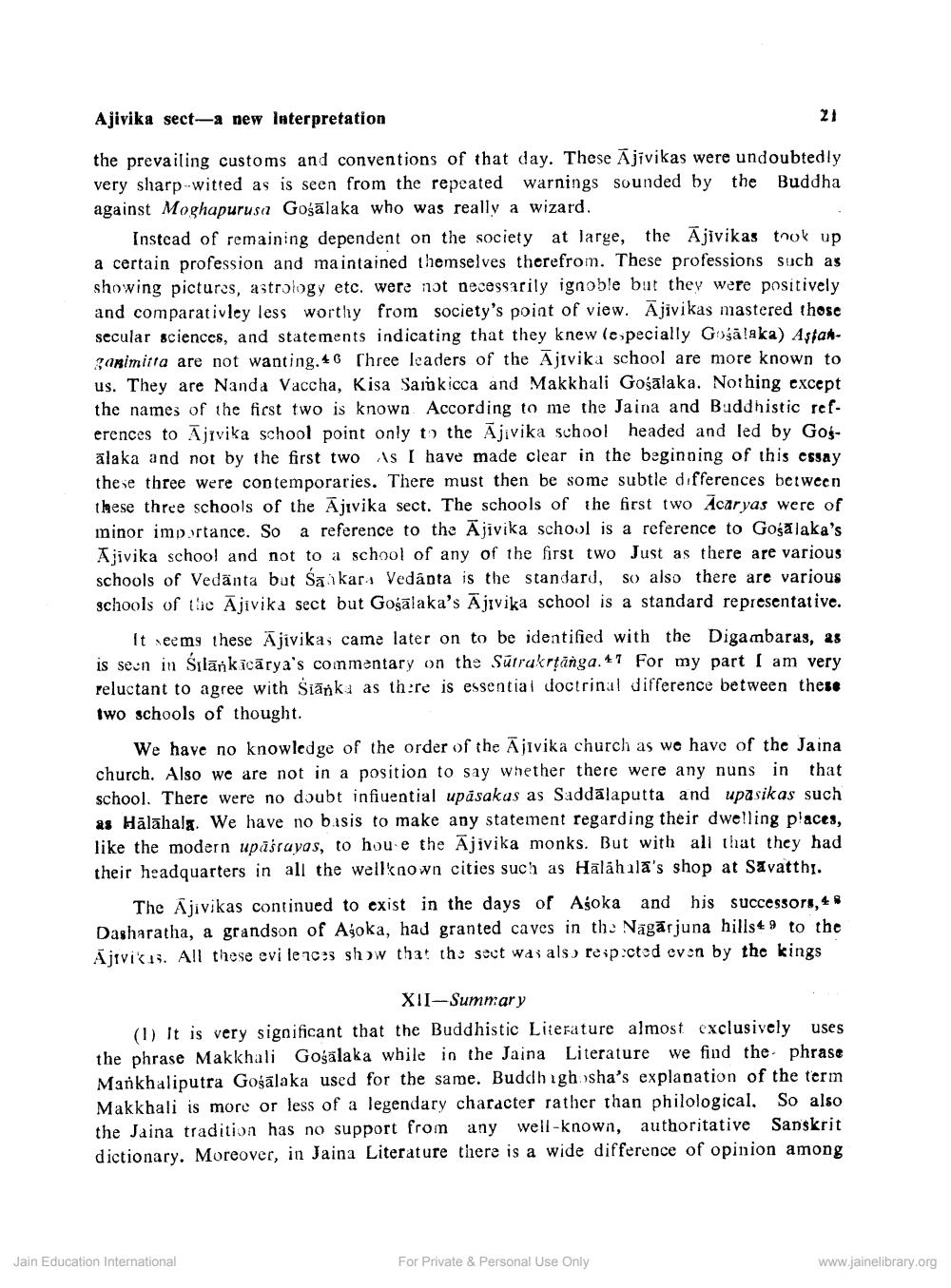________________
Ajivika sect-a new Interpretation
21
the prevailing customs and conventions of that day. These Ājivikas were undoubtedly very sharp--witted as is seen from the repeated warnings sounded by the Buddha against Moghapurusa Gośālaka who was really a wizard.
Instead of remaining dependent on the society at large, the Ajivikas tnok up a certain profession and maintained themselves therefrom. These professions such as showing pictures, astrology etc. were not necessarily ignoble but they were positively and comparativley less worthy from society's point of view. Ajivikas mastered those secular sciences, and statements indicating that they knew (especially Gošā!aka) Asfatgapimitta are not wanting. 46 Three leaders of the Ajivika school are more known to us. They are Nanda Vaccha, Kisa Sainkicca and Makkhali Gośālaka. Nothing except the names of the first two is known According to me the Jaina and Buddhistic references to Ajivika school point only to the Ajivika school headed and led by Gosālaka and not by the first two As I have made clear in the beginning of this essay these three were contemporaries. There must then be some subtle differences between these three schools of the Ajivika sect. The schools of the first two Acaryas were of minor importance. So a reference to the Ājivika school is a reference to Gośālaka's Ajivika school and not to a school of any of the first two Just as there are various schools of Vedānta but să i kars Vedanta is the standard, so also there are various schools of the Ajivika sect but Gośālaka's Ajivika school is a standard representative.
It seems these Ajivika; came later on to be identified with the Digambaras, as is seen in silārkācārya's commentary on the Sūtrakrtānga. 47 For my part I am very reluctant to agree with Siānka as th:re is essentiai doctrinal difference between these two schools of thought.
We have no knowledge of the order of the Ājivika church as we have of the Jaina church. Also we are not in a position to say whether there were any nuns in that school. There were no doubt infiuential upăsakas as Saddālaputta and upasikas such as Hālāhala. We have no baasis to make any statement regarding their dwelling places, like the modern upāśrayas, to hou e the Ajivika monks. But with all that they had their headquarters in all the wellknown cities such as Hālāhala's shop at Savatthi.
The Ajivikas continued to exist in the days of Asoka and his successors, 4 * Dasharatha, a grandson of Asoka, had granted caves in the Nāgārjuna hillst 9 to the Ajavik 13. All these evi le ncs show that the sect was als) reip.cted even by the kings
XII-Summary (1) It is very significant that the Buddhistic Literature almost exclusively uses the phrase Makkhali Gošalaka while in the Jaina Literature we find the phrase Mankhaliputra Gośālaka used for the same. Buddhighsha's explanation of the term Makkhali is more or less of a legendary character rather than philological. So also the Jaina tradition has no support from any well-known, authoritative Sanskrit dictionary. Moreover, in Jaina Literature there is a wide difference of opinion among
Jain Education International
For Private & Personal Use Only
www.jainelibrary.org




